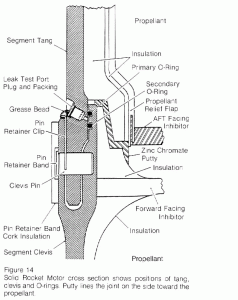The Challenger exploded 73 seconds after launch on January 28, 1986. It was the 25th shuttle mission. The seven astronauts killed included a high school teacher, Christa McAuliffe, who was to broadcast lessons from space. Government investigations and redesign efforts grounded the shuttle program for the next two years (Freiman and Schlager 1995a, p. 161).
The Challenger explosion was investigated by a presidential commission, as well as the U.S. Senate and House of Representatives. This disaster represented a rare engineering failure where a number of people knew the cause immediately.
The Rogers Commission, appointed by President Ronald Reagan, recorded 15,000 pages of testimony and reviewed 170,000 pages of documents and hundreds of photographs. More than 6,000 people were interviewed as part of the three-month investigation. The commission’s findings were released on June 6, 1986, in a 256-page report. The House Committee on Science and Technology also conducted hearings and issued a report. After the incident, a number of astronauts and other key personnel resigned from NASA (Freiman and Schlager 1995a, pp. 169-171).
The U.S. House of Representatives Committee on Science and Technology report (Committee on Science and Technology 1986), “Investigation of the Challenger Accident, October 29, 1986,” is available on-line at http://history.nasa.gov/rogersrep/51lcover.htm and http://www.gpoaccess.gov/challenger/64_420.pdf. A summary is provided in Freiman and Schlager (1995a, pp. 161-172). Two ethics websites, http://onlineethics.org (Case Western Reserve University 2007b) and Texas A&M University (http://ethics.tamu.edu/ethics/shuttle/shuttle1.htm Space Shuttle Challenger Disaster 2007), feature this case study.






